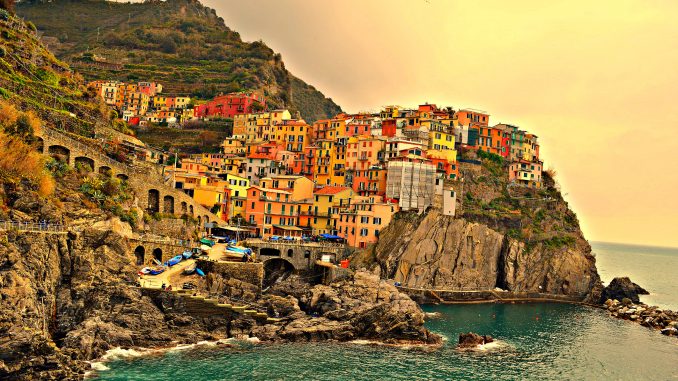
Italian Diaries: Best of Italy in Seven Days
It was our first big trip in the year 2018. After a lot of thought processing, we decided on our destination – Italy!!!
Initially we had our own reservation considering the fact that it was going to be an eight day long trip, involving a 4 year old. But yes, with God’s grace, it all went well.
For a long time, we had the plan in the making, unable to fit the places-price-days in the most appropriate manner.
The places that we wished to cover were Florence, Cinque Terre, Tuscany, Naples, Pompeii, Capri, Pisa, Rome, Vatican, Venice and Amalfi Coast. Each was different from the other and so skipping any, didn’t make sense. But yes, to fit the jigsaw puzzle better, we had to bring in the fashion hub of Milan in to the picture and put off Venice to a later date as we thought Venice would be a good summer destination that could be done on any weekend from Germany.
Well, finally, we arrived at the plan:
Fly to Milan in the evening and stay overnight (This day is not counted in the itinerary though!!!)
Day 1: Milan. Travel to Florence
Day 2: Drive through Tuscan villages such as San Gimignano. Beautiful town of Sienna, the leaning tower of Pisa and back to Florence
Day 3: The UNESCO heritage site – Cinque Terre and Florence
Day 4: Travel to Naples. Capri Island
Day 5: The ruins of Pompeii and Amalfi Coast
Day 6: Naples city. Travel to Rome
Day 7: Vatican City, Rome.
Travel back from Rome
Tips before the journey:
- Download the Italy offline map. Google maps are the best. It made our travel very smooth and hassle-free.
- Having a sim card with data too is good to have. I had a sim card from “Lebara” (https://mobile.lebara.com/global). Their network spanned the whole of Italy, resulting in a trouble free experience.
- Travel light, minimum dresses, good walking shoes as there is a fair bit of ground to cover, a backpack with all essentials, some toffees or biscuits, emergency medical kit, umbrellas, caps / hats, sunscreen lotion and shades
- As Italy attracts lot of tourists, almost everyone understands and speaks English, but there still are places like Napoli / Naples, where we faced a little difficulty in communicating. Google translate app came in handy.
- Tickets in most of the cities are sold in Tobacco shops too. If you don’t find the ticket counters, look out for the nearest tobacco shops.
- As much as possible avoid carrying valuables. If it is unavoidable, monitor your belongings all the time as there are lot of pick pocketers in Italy, especially in and around places like Napoli / Naples.
Flying to Milan:
We travelled from Stuttgart, Germany to Italy. Milan was our first port of entry. The flying duration was about 1 hour. Reached Malpenso (Mailand) airport which is on the outskirts of Italy, at about 7.45 P.M. There are 3 airports connecting Milan internationally. Malpenso is the airport from where few of the European, Asian and low-cost airlines fly out and it is about 50 kms from the city centre. All the EasyJet flights, like ours, fly out of this airport.
How to reach Milan from airport:
The cheapest and the best way to connect to the Milan Central station is the bus shuttle service which is easily available outside the airport.
For adults: € 8; for children: € 5
It takes about 20 minutes by bus to the Milan central station.
Travelling within Milan by public transport:
We looked around for ticket counters to purchase tickets. There were several ticket counters for different trains but didn’t find one for the local transportation. The tickets are officially sold here in tobacco shops.
A 24-hour local transportation ticket (which is probably the best bet) for adult costs € 4.5. We bought these.
Stay:
We stayed at a hotel called Catalani E Madrid. The hotel was decent enough for a stay over. It came with complimentary breakfast!!! Of course, the breakfast spread was thoroughly labelled – ‘Only 1 serving of all varieties’, which put us off!!! In fact, there was even a lady who closely monitored the guests so that no one consumes more than what is stipulated. I must say it again, it was totally weird. Breakfast apart, it is a pretty decent hotel, close to the Metro station Piola, which is the 3rd stop from Milan Centrale station on Line M2.
Day 1: Piazza and Pizza – A day in Milan
Our first day in Italy found us surrounded by ‘Piazzas’ and ‘Pizzas’… Well, we know what Pizzas are … We also know that ‘Pizza’ is originally from Italy. Now, what are Piazzas???
In the earlier days, every traditional European town had a square where people came together as a community gathering or for buying / selling products and so on. Most of the squares were designed so as to house open markets, music concerts, rallies and so on. And such city squares are called ‘Piazza’ in Italian.
During touring, we tend to walk around a lot. We cracked a joke that we didn’t have to worry much about Pizzas as there were enough Piazzas to cover!!!
We kicked off our long vacation in Italy with none other than the most stylish city of Italy – Milan.
Facts and Impressions:
Milan is a good blend of modernization and traditions. Being one of the richest cities in Europe, people here are very hard working, welcoming and the most important of all, guide the tourists better, with or without the sound knowledge of English. Yes. We could feel the difference as we moved towards southern Italy.
We had our connecting train to Florence at 5.30 P.M. All in all, we had a little more than half a day in hand for Milan sight-seeing. So, we arrived at a plan considering the below facts:
- Easter crowd
- Travelling with a kid
A day in Milan – Things to do:
- Duomo Square
- Duomo di Milano
- Galleria Vittorio Emanuelle II
- Piazza della Scala
- Castello Sforezsco
All these places are within a walkable distance from each other. So, we started our day after breakfast at around 8.30 A.M. With the Metro line M2 until Milan Centrale, and from there Metro line M3 until Duomo, we reached the Duomo square.
Duomo Square: Otherwise known as ‘Piazza Della Duomo’, it is the heart of Milan housing the Milan Cathedral among other famous monuments.
Duomo di Milano / Milan Cathedral: The largest cathedral in Italy is the seat of the archbishop of Milan. It was here that Napolean was crowned the King of Italy. To commemorate, one of the spires of this cathedral has a statue of Napolean. It is said that the cathedral took 6 centuries to be completed.
There was a huge line at the entrance of this cathedral due to the holiday season. Though there are several other buildings in the piazza, it is this giant cathedral which charms you more. Standing tall at the center of the piazza, this cathedral has several intricate sculptures. While in the queue, we were just looking at the structure, at the various figures carved and guess what, the façade of this cathedral houses a statue which strikes a great resemblance to the statue of liberty in New York. But, the fact of the matter is that there is absolutely no connection to both of these statues. Also, this statue in the façade was built much earlier than the statue of liberty. It is said that the sculptor of Statue of Liberty, Bartholdi, took inspiration from this statue, sculpted by Pacetti about 70 years earlier.
Once inside the cathedral, I was stunned by the window glass paintings. It seems, the world’s largest window with glass painting is in this cathedral. One such painting recites the story of Jesus Christ starting with his birth, right until crucification, as in those days they believed that paintings are the best way to tell stories rather than books. Wow! Each window with vibrant coloured paintings have a different story to tell.
Entrance ticket to the Duomo: 6 euros (Adult)
Galleria Vittorio Emanuelle II: Spent some time inside the cathedral and in the Duomo square. We next walked inside the beautiful and covered shopping arena – Galleria Vittorio Emanuelle II, named after the first king of Italy. Top luxury branded shops can be found here. It is a must visit place for people interested in shopping by brand names. On our part, we simply loved the window shopping.
Piazza della Scala: Once out, what we saw on the other end was a square called Piazza della Scala, named after the renowned Opera house La Scala.
We walked towards the Duomo Square in search of some good restaurant that serves vegetarian food. Besides, our daughter’s demand for the day – Pizza, had to be met!
We found a good restaurant right in front of the cathedral square – ‘Gran Caffé Visconteo’. With the onset of Spring, people celebrate here and the restaurant had put up chairs and tables on the footpath. Well, as it was too windy, we opted to sit inside. Just as we were thinking that the place was too small with almost no empty chairs, the waitress said – “Don’t worry, we serve vegetarian pizzas and you follow me!!! She led us through the narrow space, right in between the few tables placed, which took us right up to a narrow staircase leading us down to an equally narrow passage where she finally opened the doors to a very posh looking seating area!!! I was so pleasantly surprised. A restaurant which looked so small from outside, was actually quite massive, and neatly tucked in!
Within no time, the empty seating area was filled up.
We ordered a Vegetarian Pizza with aubergine and Zuccini. Wow, it tasted amazing.
Restaurant Name : ‘Gran Caffé Visconteo’
We took a break for about 45 minutes.
Castello Sforezsco: You can also take the Metro from the Duomo square and alight at Cairoli. What I would suggest is to take a walk through the pedestrian zone – Via Dante. It is marked by beautiful and colourful shops. The street musicians will keep you entertained for sure and if it is Spring or Summer, the numerous Gelato (ice cream) stores on the way will attract you with some of the most amazing flavours of ice creams.
‘Gelato’ is a variant of ice-cream which originated in Italy. “Gelato’ in Italian means frozen. Once you taste it, you are for sure to fall in love with it. Gelato is served in a cup or a cone and most of the shops that we visited offered Gelato as “double” or “Triple” flavoured cone / cup, wherein we had to select 2 or 3 flavours!!! Each cone / cup costs roughly around 3.5 Euros.
In our entire trip, we tried almost all available flavours with different combinations.
Finally, we reached the castle.This castle was originally constructed by Galeazzo II Visconti in the 14th century, which was later enlarged by his successors. It used to be the residence of the Visconti lords but was destroyed by the Republicans. In 1450, the military leader Francesco Sforza declared himself the Duke of Milan and reconstructed the castle which now houses several museums. During his time, this turned into a beautiful renaissance center and great artists of that time like da Vinci were invited to decorate the castle.
In the subsequent years under various rulers, this castle shattered and was highly neglected. After the Unification of Italy, this castle underwent major renovation and was made as a public monument in 1900.
The main attraction of the castle are its towers. Especially the ones in the façade facing the city. Behind these towers are the palatial residence with beautiful gardens.
The castle houses several museums consisting of masterpieces from the renaissance times, be it the musical instruments, art, sculptures and the likes. If time permits, do visit these museums. Even otherwise, the castle is a must visit.
Well, it was time for us to go back to our hotel to check out and from there, head towards the train station for our next destination – Florence!!!
Milan – It was nice meeting you!!!
Reached Florence / Firenze at 9.30 P.M. by Trenitalia.
Stay in Florence/Firenze:
Novoli B&B (It is an apartment in a quite and peaceful location. The central station is connected by bus and the ride is about 10 minutes)
Florence is undergoing lot of construction activities. As such, the public transports are greatly affected. After a lot of search and enquiries, we finally figured out the bus stop to catch the bus 17B which goes to our hotel. Normally after 8 P.M. the frequencies of bus are very less. So in the hunt for the bus stop, we missed our direct connection. Though we looked around, we were unable to find taxis too. Luckily, we managed to catch the next best bus connection available. Also, as it turned out, we sighted taxis the next day!!!
There is a common tax called City Tax which needs to be paid in every hotel across Italy in addition to the payment made to the hotel / apartment (we had booked all the hotels online), which is around 3 euros per head per night.
It was late in the night when we landed at our hotel and in a hurry to find the hotel and get there, we forgot to fill up our food stocks!!! Thankfully we found a Falafel shop nearby run by a Pakistani!! Our happiness knew no bounds when we found it and then, we ordered for veg falafel.
Tips:
- Milan is a beautiful and a happening city. It is worth a day’s visit if you are planning to travel there.
- Wherever you find a supermarket grab a bottle of water. It will cost you not more than 50 cents for a bottle of 500 ml. Anywhere else, it is a total loot
- Milan railway station is huge and very confusing. If you have to catch a train, it is safe to be there well ahead of time, especially if you are a first-time visitor
- Beware of pick pocketers
- Best time to visit Italy – Either spring or autumn. Summers can get really hot, making travelling nearly impossible. We were here in the early spring and the winter to spring transition was on, be it in the ticket pricing or in the way people dressed or the weather or the nature.
- If your stay here is longer than a day, then don’t miss da Vinci’s “The Last Supper” painting in the Church of Santa Maria Delle. It should be noted that the tickets are to be purchased in advance.
Day 2: Best of Tuscany – Sienna, San Gimignano, Pisa
We woke up early in the morning, had a quick breakfast and reached the Santa Maria Novella station (main station at Firenze) to proceed with our trip through the scenic Tuscany villages to Sienna and Pisa.
A Day inTuscany – Plan for the day:
- Siena
- San Gimignano
- Pisa
During our initial days of Italy trip planning, we had included Florence, Pisa, Cinque Terre and a Tuscan village – San Gimignano. But we were somehow not able to include this village as the public transport connectivity isn’t great and we didn’t have more time to spare.
We found out that there is a trip maker – WalkAbout , who arranges a day trip through the Tuscan village – San Gimignano, Sienna and also Pisa in a day. We felt that it would be a good option to go with it.
If you plan to rent a car and drive, I would say, it will be the best thing to do. But yes, driving in Italy at times can become crazy due to people’s erratic driving style.
With the team Walkabout, we started at 8.30 A.M from the Santa Maria Novella station, towards Sienna passing through the beautiful Tuscan landscapes.
Facts and impressions:
Tuscany is known for its beautiful landscapes, historical legacy and most importantly the Italian Renaissance. The main river here –river Arno, flows through major cities and attractions of Tuscany – Florence, Pisa and Empoli.
Around 45 BC, the Roman Empire established the cities of Florence, Sienna, Lucca and Pisa bringing up a lot of developmental activities. The walls built in this era still exist in the city of Florence.
But after the downfall of the Roman Empire, all these cities became independent factions, always on war with each other – Florence and Sienna being the biggest enemies of each other, until the unification of Italy.
Through the valleys and green, vineyards and olive groves, we finally reached Siena at around 10.15 A.M.
Siena:
This beautiful city of Tuscany sits in a most amazing juncture of three hills.
We alighted from the bus and walked through the ancient, well preserved narrow lanes of the city towards the center of the city – Piazza del Campo, a stunning well paved square with the tallest tower in Italy (All thanks to the flag post) – Torre del Mangia. Siena is home to one of the oldest universities in Europe, the oldest bank in the world and the world famous Palio.
The city, which started as a hilltop town was conquered by Romans who then established their military outpost here. This was followed by the invasion of Lombards, the Franks and the Church. But the inhabitants, who were unhappy, finally claimed their right to govern their own town. But no sooner, Sienna ended up being arch rival to an equally powerful Florence. Both the cities didn’t want to give up, leading to several wars, in which almost every time Siena lost. Finally, it gave it up to become a part of the Florentine territory. Despite all the turbulence, the city grew well until a Plague hit the beautiful city claiming its 1/3rd population.
Palazzo Salimbeni: This was the original headquarters of the world’s oldest bank – Monte dei Paschi di Siena
On our way from the bus bay to the city center, we walked through several cities. A walk through the narrow lanes introduced us to the unique culture prevalent here – Ward centric culture. Here, a person’s identity is determined by the ward in which he was born!!! And these wards / streets are named after animals. And yes, you are right, ward rivalries were prevalent in the ancient days.
The narrow-cobbled streets with the ancient houses and buildings which lined up on either side of the streets and the streets / wards separated from each other with a symbol of an animal on the wall of the building – led to the heart of the city – Piazza Del Campo.
Piazza Del Campo: In the heart of this beautiful city, Piazza Del Campo has served as a centre for life and culture of the city for several centuries. One of the most beautiful civic centres of Europe, now part of the UNESCO World Heritage, has been and is the venue for the medieval horse race which happens twice a year – July and August. This race of 3 laps, approximately for about 90 secs, attracts a crowd of about 50 K people, who are either there to enjoy the race, or bet, or to cheer up the real heroes of the race – The horses. Yes, the winner of the race is not a person or a group, but the horse by itself. And a couple of days before the race, the horses are taken to the church to get the blessings. Palio is largely considered as the traditional horse race held in the Tuscan town – Siena. But ‘Palio’ actually means the trophy / banner, which is awarded to the winner of this world-renowned horse race, in which several wards in and around Siena participate and vie for the trophy!!! (Now we know one of the reasons for the rivalries between the wards). More often than not, the race as well as the trophy are both referred to as Palio!!!
Standing at the center of the tiled shell-shaped square, one can imagine how the Palio happened in the olden days!!! Packed crowd sweating out on a hot summer noon, standing and waiting for hours together for a race, not lasting beyond 90s, to begin, cheering for their own ward in loud shouts and screams, flashing banners.
Pallazzo Publico: This along with the Piazza Del Campo and the Torre del Mangia are part of the UNESCO world heritage site. It houses an ancient art museum consisting of great works of Lorenzetti.
The Duomo:
A beautiful sky-scraping church designed in the form of Latin cross, with both the interior and the exterior wall made of striped black and white marbles symbolically representing the black and white horses of the city’s founders – Senius and Aschius, who were supposedly nephews of the founder of Rome – Romulus. It exhibits a good combination of Roman-Gothic architecture.
We spent about 2 to 3 hours in Siena. From there, we went to a small village called Chianti which is known for its vineyards. Beautiful landscape presented itself everywhere. We clicked a lot of pictures but then decided to switch the cameras off and enjoy the nature’s beauty visually. Here we took a small break at around 12.00 P.M. for an authentic Tuscan lunch at one of the family run vineyards. It was a sumptuous lunch consisting of homemade pasta served with tomato sauce, the home-made cheese and the Tuscan biscotti!!! For those who taste wine, there were plenty of varieties of wines that were served too.
Hotel Name : Fattoria Poggio Alloro
Interesting Pasta recipes that you may want to try :
Started from the hotel at around 2.20 P.M and headed towards an enchanting medieval hilltop town – San Gimignano.
San Gimignano:
It is known for its fine tower houses, which are preserved now. Roman and Gothic architecture can be seen in sheer abundance. The Historic Center of San Gimignano is a UNESCO world heritage site. This city was once a prosperous town, mainly because of Saffron, that was grown for food, and colouring the white wine. It became more popular as it was one halting point for the pilgrims travelling to Rome. But after the outbreak of plague which hit major parts of Europe, this city saw a downfall and eventually became a part of Florence. The main attraction here are the towers. Though several towers were destroyed during wars, San Gimignano has managed to preserve 14 of them, which in turn have made this hilltop town renowned. The Collegiatta church houses the artworks of many Italian renaissance artists.
Apart from the towers, the other main attraction is the Piazza della Cisterna. It is the most beautiful and famous piazza in all of San Gimignano. It is surrounded by medieval houses constructed at different points in time. And there is an interesting small well at the center of the piazza, which at one point in time served the water requirements of the people living here. Well, another attraction here is the Gelato. Yes. There are 2 Gelato shops. One, which is a self-proclaimed Best Gelato shop in the world. And the other is actually an award winning Gelataria. As it was a hot day, without any doubt there was a long queue in front of both the shops… We grabbed one from Gelateria Dondoli… There were a number of varieties, all looking attractive that picking one became a big problem. Not just our daughter, we too were unable to decide.
After strolling around for an hour, we boarded back our bus and headed towards Pisa.
Pisa:
This Tuscan city on the banks of river Arno is renowned for its leaning tower – also called as the leaning tower of Pisa (The bell tower). It is a university town, with one of the oldest universities founded by Napolean. Though this ancient town has lot of structures from the medieval times, the main attraction is the Piazza del Miracoli (or The Square of Wonders), mainly comprising of the Duomo (Cathedral), the Baptistry, the leaning tower and the monumental cemetery. Once inside this square, along with the stunning background wonders, you will find tourists and photographers at their creative best, trying to capture the most innovative photo of the leaning tower.
It is said that it was all fine until the Duomo and Baptistry were constructed. While constructing the Bell tower, the soil beneath started to sink, due to which the construction had to be abandoned for a while. The soil sunk to some extent, but the tower didn’t collapse. Now, in an effort to complete the tower, the final layers of the tower had to be designed in a different angle to counter balance the leaning tower so that it doesn’t collapse.
Call it an architectural marvel or nature’s wonder, it is standing tall and majestic for years together now.
We clicked numerous pictures with different poises till our camera battery dried up!!!
People willing to climb the Pisa tower can do so. The tickets can be purchased online too to skip the line. We skipped this as kids below 8 years are not allowed due to safety reasons. The cathedral is a must see too.
We purchased few souvenirs from the shops just outside the heritage site. To our surprise, all these street vendors are from Bangladesh. There are quite a lot of refugees from Bangladesh and Pakistan who have made Italy their base. Few have succeeded and have made it big with hard work. Few are still selling Chinese goods by the road side though. They were probably happy to see us, for being the next door neighbours of their motherland (or we could be wrong). Most of them spoke very well in Italian, but couldn’t manage English nor Hindi. We found a tea shop on our way back and what attracted us to that shop was this caption “Indian Masala Chai with Samosa”, put up in big bold letters on the wall. Couldn’t resist ourselves. We had a cup of chai and samosas each. The shopkeeper was happy to have us and spoke to us in length. Due to lack of time, we had to rush through with the conversation and run towards our bus parked at the bus bay, to return back to Florence.
Reached Florence back at 8.45 P.M.
Back to our hotel room by the direct bus – Bus Number 22. By now, we were pretty comfortable with the local public transport system here.
Tips:
- Public transport tickets can be purchased here from counters with the name “ETAF”
- The most useful ticket is the 90 minute -travel anywhere in Florence -which costs 1.2 euros per ticket
- WalkAbout tours are very cost effective and friendly group of people. The bus provided was good and seats were very comfortable. The tour guide and the bus driver were friendly and very informative
Day 3: Cinque Terre – 5 flavours of colourful Italy
This day can be voted as one of the most memorable days in our Italy trip because of all possible reasons.
Plan for the day – Visit Cinque Terre which is about 3 hours from Florence with a change over at La Spezia. As we will be spending close to 6 hours in the day travelling, we wanted to start the day as early as possible. So, woke up at 4.30 A.M. and we planned to catch the 5.27 A.M bus from our hotel to the train station. But, as it turned out, the bus was ahead of schedule and had left by the time we reached the bus stop. We were disappointed as this would mean that we will not make it for our train at 6.08 A.M. But we didn’t leave hope. We waited for the next connection and reached the train station at 6.03 A.M. Things were really not going well for us that morning, as the directions and sign boards at the station were totally unclear. After a marathon, by the time we finally reached the platform and pressed the button to open the door of the train, it started moving. Our disappointment knew no bounds at that moment. So much of a hassle for absolutely nothing.
Well, no other go. We waited at the station for our next connection. Meanwhile, we had a quick breakfast. The next train to La Spezia was only at 7.00 A.M. with a change over at Pisa.
The train journey was good. We could see the transformation from level lands to hilly areas and at some places we could even see colourful houses perched at the hill tops telling us that we were getting closer to Cinque Terre. The weather was good. Winter was almost getting over and there was greenery around and light intermittent showers too.
La Spezia is a center not just because it is a port city and has lot of historical importance, but also because the connectivity to the UNESCO heritage villages – Cinque Terre, is only through La Spezia. There are frequent trains starting from La Spezia connecting all the five villages of Cinque Terre.
We purchased the Cinque Terre day pass here. The summer prices had just begun and we had to pay about 16 euros per head. This ticket covers train cost to travel to the villages in Cinque Terre, entrance to these villages, the walking trail and WiFi. Along with this, one gets a small leaflet of train timings from each village. There was a long queue to get these tickets. There are different types of cards too that can be purchased depending upon your requirements.
One can even purchase the card / tickets online:
http://www.cinqueterre.eu.com/en/cinque-terre-card
We boarded a train from La Spezia towards “Lavento” and reached the first village – “Riomaggiore” in about 5 minutes. So around 10.00 A.M. we were in Cinque Terre.
Riomaggiore: As soon as we were out of the train, we gasped for a while looking at the sight. The roaring sea shore on one side and sky scrapping hill on the other side. A narrow railway line separating the two. Wow, it is a sight to see and experience.
We walked through a small tunnel leading to the village of Riomaggiore. We walked through the narrow lanes peaking towards the hill. Ditto as viewed on Google, the colourful houses perched on the hill top were irresistible!!! While surveying, we hopped from one view point to another and one hilltop to another. Enroute, we found lots and lots of lemon and orange gardens. We walked around until we found what we were looking for!!! It is a true wonder to see how people over the years have built terraces and gardens in the rugged mountains lined by the ocean. The spectacular view overlooking the sea, the lemon gardens, the vineyards, the olive trees make the place even more special!!! And the location is such that, these villages cannot be seen from elsewhere!!! The vibrant colours here have the power to turn any amateur in to a poet. The colourful houses raise up from the sea to meet the skies through the green hills!!! Picture perfect, to say the least!
If you have time, the best way to explore the place and its culture is to hop through each village through the walking trail.
After a small walk in Riomaggiore, we headed towards the next village – Manarola.
Manarola: Each village is unique in its own way. Unlike Riomaggiore, Manarola doesn’t have an easy access to the sea.
And trust me, it is here that we got one of our best pictures!!!
The village Corniglia is beautiful in its own way. It is one village with no sea access and also, it is visible from all the other 4 villages.
We were short of time to see all the villages in detail. So, we decided to skip this village and proceed to the next village – Vernazza.
Vernazza: Beautiful in its own way, this small fishing village by the Italian Rivierra has a lookout fortress and the entire gulf of Cinque Terre can be viewed from here. Of the 5 villages, it is only this village which has the natural port. Like other villages, this village too has colourful buildings which are equally beautiful to look at. This village reminded me of our very own Varanasi and its narrow lanes. We walked around the village for a while, grabbed the local delicacy – Focaccia and headed towards the next village – Monterosso.
Monterosso: The only village with a beach, this place is the most sought after in the summers.
Don’t miss the beach and the Monterosso giant when here. The common sight when in Cinque Terre villages are the colourful houses perched on the hills besides the sea, and terrace cultivation of lemon and olives. In that sense, Monterosso is no different.
An option to drive would be a better alternative to reach here from Florence as it is faster. These villages need at least 5 to 6 hours.
We came back to La Spezia at around 3 P.M and back in Florence/Firenze at around 5.30 P.M
Florence:
Being the birth place of Renaissance, Florence – the capital of Tuscany has been in the frontline being the richest, happening, strongest city from the medieval days. The city center consists of old traditional buildings displaying the architectural marvel of the ancient days. No wonder it is ranked as one of the most beautiful cities in the world! Just a walk through the lanes in the heart of the architectural town will prove this point.
Well, time was short for us to go around this beautiful town of Florence. Thankfully, spring was in and the days were getting longer.
We had decided to visit few monuments, but the ancient town by itself was so beautiful that we enjoyed most of the time walking through the streets, the squares, the bridges and the rest. The heart of the city is at a walkable distance from the Firenze / Florence train station. The city of Florence is full of high raised structures with cobbled streets. When here, you must visit:
- Basilica of Santa Maria Novella: While in the train station Firenze Santa Maria Novella, don’t miss to see / visit the adjacent Basilica which is beautiful in its own way
- Piazza Della Republica: On the way to the Duomo, we passed through a square called Piazza Della Republica, which was festive with people, cafeteria and beautiful structures
- The Dome Cathedral popularly called as the Duomo: The cathedral along with Baptistry and Campanile are declared UNESCO heritage sites. Believe it or not, we walked from the train station to the city center without the map, thanks to the prominent brick Dome which guided us right throughout. Gothic style of architecture at its best, this Duomo is something to be seen, from outside as well as inside. The green, white and red marbled structure standing tall and majestic, leaves one spellbound at its architectural marvel. Don’t miss out the rich façade and the equally beautiful baptistry.
- Piazza Della Signoria: As we walked down to the city center, we arrived at a large open area. Located just in front of Palazza Vecchio and Uffizi gallery, one is bound to spend a lot of time here. Until our daughter grows a little, we thought of avoiding galleries and museums, so had to skip the Uffizi Museum. We enjoyed a small walk around the square looking at the numerous statues including the copy of Michelangelo’s David.
- Palazzo Vecchio: City town hall and one of the landmarks located in the Piazza Della Signoria. The tower resembles a bit to the Torre del Mangia of Siena
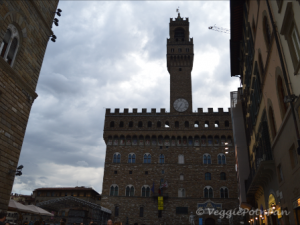
- Piazzale Degli Uffizi: Walking further down besides the Palazzo Vecchio, we passed through Piazzale Degli Uffizi displaying statues of the popular figures from the Renaissance period
- River Arno: End of the street, you will get to view the river Arno and the beautiful bridges on either side. The best time to be here is around dusk.
- Ponte Vecchio: When you have had enough of the statues, the flowing river, just turn around to find a beautiful bridge – Ponte Vecchio. It is a medieval period stone arch bridge over the river Arno famous for the shops built over the bridge. In the ancient times these shops were known to be occupied by Butchers, cut to the present day, you will find shops selling soveniers, jewlery and art. A walk through this bridge in the night is a feast to the eyes
- Piazzale Michelangelo: This is one which we missed due to lack of time and also because our daughter was all tired to proceed further. But yes, the city as viewed from here in the night is supposed to be the best takeaway from the beautiful city of Florence.
On our way back from the old city, we had the local Pizza with broccoli and spinach in one of the local Pizzerias. The definition of pizza changed completely for good, once we tasted the pizza here – Pizzas that come with almost any vegetable!!!
We took Bus 22 back to our apartment.
Day 4: Naples – Ring the Capri Bell
As the travel time between Florence and Naples is more, we took an early morning train to Naples. We checked out of hotel around 5.45 A.M. Took the direct bus 22 to the Firenze train station. Grabbed some breakfast from the cafeteria at the station and boarded the Trenitalia train Frecciarossa (Fastest train in Italy) from Firenze Santa Maria Novella towards Napoli Centrale at 6.50 A.M. The train journey was pleasant. Reached Napoli Centrale at 10.00 A.M.
Until this part of our journey, language was not at all an issue. But, here in Napoli, we could hardly find someone who could speak English.
Plan for the Day:
Capri
Anacapri
We had booked the ferry from Calata Porta di Massa. The reporting time was 11.30A.M. In a new place, without the local language, we had just about an hour to explore. Our mobile data came handy and we searched for the apartment booked, which was about 1 km from the train station. The google map was pretty helpful and we were almost there, but unfortunately couldn’t find the house!!! We looked around. That’s when a friendly Pakistani came out to our rescue, who not only made a call to the owner, but even waited with us until the owner arrived, spoke with him in Italian as the owner couldn’t speak English and then left. He was truly God sent!!!
Stay:
Apartment : “Ciru E Lucia”. Pretty good apartment. But the approach was not all that great. It was tucked away in a crowded bylane. But that seemed to be the case with the entire city of Napoli as such.
We quickly checked in, locked the apartment and rushed back to the train station. Here again, like Milan, the public transportation tickets are officially sold in Tobacco shops!!! Found this a little weird, but that’s how it is in Italy. 90-minute ticket costs about 1.10 euros per person.
From Garibaldi, we took Bus 151 to Via Marian Duomo Stop, all thanks to an old man who was sitting next to us who alerted us at the right time. The bus neither had any in-house announcements nor display board to know about the stops.
We managed to reach the port at 11.30 A.M. We sailed in a ferry to this charming island of Capri which is about 50 minutes from the port of Napoli.
Reached Capri Island at 12.50 P.M.
Our ferry ride from Naples port to Capri costed us about 47 euros per person for a round trip, excluding taxes.
Capri:
We could see the difference between Naples mainland and the Island of Capri. In the Roman age, it used to be the resort of the riches!!!
This small island in the Tyrrhenian Sea is known for its limestone and sandstone. My curiosity to know the source of the name – Capri lead me to several interesting stories. Some say that the first Colonists here – the Greeks named the town after ‘Wild boars’ whereas some other say that Romans called this island as ‘Goat Island’.
Things to do:
- Marina Grande
- Capri
- Ana Capri
- Blue Grotto
We had kept aside half a day for Capri. It was a cloudy and a windy day. As soon as we got down from the Ferry, we took a 1-hour boat ride along the Blue Grotto and other parts of Capri. The boat took us around the beautiful island of Capri through the Turquoise waters and breath-taking grottoes, the main being the Blue Grotto.
Blue Grotto: is an underwater cavity which appears blue by reflecting the sunlight that escapes through the little cavity. There are quite a lot of interesting stories surrounding these grottoes here. The grottoes are opened for public only when the weather permits. When we travelled, the weather wasn’t all that great and it was still transitioning into the summer. So unluckily, the grotto was closed for public. We went near it and tried catching a glimpse of the cave. Enroute, we passed through the beautiful liquid emerald – the lovely Green grotto. Italy of my imagination was getting painted in different colours with every passing day. We were told that on a sunny day people come to the Green grotto for a swim or rock climbing!!!
Our boat passed through the harbour of olden days.
There is a cave in one of these amazing rocks from where in the olden days the prisoners were pushed to the deep sea
Our boat next went through the natural quaint arch, which was just so beautiful.
The crystal clear blue-green water with these amazing rocks in the background brought the photographer out in each traveller!!!
Just when you are lost in your dreams, you realize that you are back in Marina Grande!!! The 1-hour boat ride around the beautiful island costed us about 18 euros per head.
We were roaming around Marina Grande when few fresh strawberries caught our eyes. We purchased a box full of strawberries and sat by the sea side to finish the bright red coloured sweet berries!!!
While we continued down the port, we found a decent Italian restaurant very close to the bus terminus from where the buses to Anacapri start. The hungry us, barged into this hotel and our daughter wanted nothing but pasta. We ordered home-made pasta tossed in tomato sauce and mozarella and topped with grated romano cheese for her. We ordered the vegan local gnocchi and Cappuccino for ourselves. The food was delicious. And the best thing here is, vegan and vegetarian dishes are explicitly mentioned. Gnocchi is a form of pasta mainly made of wheat flour / semolina. These are largely home-made or hand-made in the Italian households!!!
Interesting Pasta recipes that you may want to try :
Post lunch, we decided to explore the Ana Capri town up hill. To reach Ana capri:
- You can either hike a few hundred of steps catching beautiful views of the sea and the local houses of the rich!!!
- (or) Take the mini bus which passes through the narrow hair pin curves to reach the town up in the hill. It costs about 2 euros per head
- (or) on a bright sunny day, there is even a funicular service to reach the hill
Funicular services were yet to start this season, so we had to opt for the bus ride to the top of the hill. It was a short but a nice ride!!! If you are with kids, I suggest you to take the bus or funicular service to Anacapri and take the stairs if you wish to, only to get down.
‘AnaCapri’ is the name coined by the Greek, where the word ‘Ana’ meaning ‘Up’ is prefixed to the island’s name – Capri, thus Anacapri, referring to the city located at a higher location in Capri. We walked through the streets with branded stores on either side leading us to a beautiful square Via Vittoria with a scenic overview of the sea. On one end there were a series of steps that led to the town of Capri and the Marina Grande. On the other side of the square is a beautiful church and traditional shops and pizzerias. There were a few stairs on one corner of the square which interested us. It led to a narrow pedestrian lane, which looked more like a maze – narrow lanes endlessly opening up to new channels!!!
After roaming around for a while, we decided to reach Marina Grande by taking the stairs. It was a great experience indeed walking through the lanes and viewing the beautiful houses facing the sea.
‘Capri Bells’ are popularly taken from here as souvenir. There is a beautiful story that goes around the Capri Bells too, which is considered to be a lucky charm. Long ago there was a poor shepherd who lived in Capri with his mother and a little sheep. The boy used to take the sheep to Mount Solaro for grazing. One day, while the boy deviated a little to pluck few beautiful flowers, the sheep was lost. He worried as the sheep was the only source of their living. But then he feebly heard the sound of the bell which was tied around the sheep’s neck and proceeded in that direction. Suddenly, St. Michael appeared wrapped in a blaze of gold over a white horse and handed over a tiny bell to the little boy and asked him to follow the sound of the little bell to lead a secured and beautiful life. It was his lucky charm as the tiny bell brought lot of happiness and prosperity in his life. A villa for St. Michael was built in that place and the people around the place started using the bell – Capri Bell – as their lucky charm.
Many such interesting stories around the places here, which sounds like they have just come out of a fairy tale book!!!
Back in Marina Grande, we took rest in the beach for some time while our daughter got creative at the sea shore. We walked around Capri for a while before we took the next ferry back to Napoli port.
It was a very cold and windy evening. Coming from Germany, we felt that the public transport here isn’t all that great compared to what we see in Germany. We waited for a while for the bus to arrive. But the wait was getting more and more painful, all thanks to the bad weather. Not always, but here I had a fair sense of direction and had a strong hunch that our apartment was not very far from the port. And so we started walking and bingo, we finally reached our apartment!!! So much so for intuition!!!
All tired, we quickly grabbed some food from a nearby Pakistani store, the owner of which had become our friend by now and headed to our apartment.
Tips:
- Public transport tickets to be purchased from Tobacco shops
- Napoli, unlike other cities in Italy, is very dirty and from what we have heard, one has to be absolutely watchful of pickpockets.
- There are 2 ports in Napoli. So, if you have made an online booking to travel to Capri or other islands, carefully note the boarding port details. Otherwise, you may end up going to a different port at the boarding time
- Ticket checking happens in almost every other bus / tram / train there. So, travelling without a ticket is a strict no. Also, once a ticket is purchased, the most important thing to do is to stamp the same. An unstamped ticket is equivalent to travelling without one, thereby attracting heavy penalty.
Day 5: Pompeii and Amalfi Coast – Ruins and riches
Plan for the day:
- Pompeii
- Amalfi Coast
After days of Pizzas and pastas, we had rice for breakfast and started our day!!!
As said already, the public transport in Italy is not all that great. Either you need to drive yourself to cover more places in a short time or hop on with some tour operators as and when there is a need for it. Renting a vehicle and getting around, is probably the cheap and best option here.
We had earlier opted for Walkabout travels to roam around Tuscan villages, Siena, San Gimignano and Pisa from Florence / Firenze. Here in Naples, we decided to travel with Italy XP. It costed 100 euros per head for a day trip from Naples to Pompeii and Amalfi Coast.
Pompeii can be reached by public transport, which is otherwise highly unreliable in Amalfi Coast. In that sense, getting around Amalfi coast without one seemed very difficult given our time constraints.
We were picked up in a small 12-seater vehicle from Starhotel Terminus, very close to the Napoli Centrale station. We headed towards our first destination – Pompeii, about 45 minutes’ by road from Napoli.
Pompeii:
It was a rainy day. So, we had to roam around Pompeii with an umbrella!!!
Facts:
The ancient city of Pompeii located at the base of Mt.Vesuvius, once prosperous due to its strategic location, is now known better for its ruins! This very mountain, was so fertile that it brought about a lot of prosperity to the city of Naples in particular, and Italy in general. The people here cultivated wine which brought a lot of trade to this area until the volcano erupted to bring everything down to ashes. In its last days, Mt.Vesuvius gave enough hints of an impending eruption (which the people ignored) before it eventually took place. The explosion in 79 A.D. spawned the town of Pompeii with stones and ashes leading to the complete burial of the entire township. The town was never rebuilt later and remained buried until it was discovered in the early 18th century. This UNESCO world heritage site, is one of the most popular tourist destinations in Italy in the present times.
We spent about half a day inside the ruins. Though one can easily spend an entire day at the site, I believe you need a minimum of 4 hours here to explore this vast civilisation, which once was a very happening centre under the Romans. This ancient township had a very complex sewage system and it was self sufficient in its own way with amphitheatres, temples, shops, bakeries and houses for the commons. Also, during the excavations, bodies of people who died in the catastrophe were found totally intact. Some are still preserved using plaster cast, in the same position as they were buried during the eruption. Few of these are kept inside the ‘Garden of Fugitives’ inside the ruins.
You can collect a map of the Pompeii from the ticket centre. Entry to Pompeii is free on the first Sunday of every month. The entry ticket is otherwise around 11 Euros per head.
Once inside, there are high chances that you get lost inside the 44 hectares of land which is under continuous excavation. So, better stay in a group and follow the maps. The signage isn’t all that great for a site like Pompeii. Having gone with a guide, it helped us there!!!
As soon as you enter and get around, you get to feel the lavish life that the middle-class led in the Roman times. The main street had shops on either side to sell various food items and groceries. The large pots and the counters are still intact which clearly show that the present-day McDonalds / Pizzerias or any food joints for that matter, are largely inspired by these ‘food joints’ from the past! Along with these, there were barrels to store the wine. There was also a large bake oven near the bakery.
Coming to the streets, these served a dual purpose – A pathway to the carriages as well as a sewage system for the entire township. There are big stones in between which served as the zebra crossing for pedestrians to cross over.
One can also view the public baths and amphitheatres. The amphitheatre, which now is in ruins, could once house up to 20000 spectators. The bitter truth about the Romans come out here. Women were treated like slaves or probably even worse during those days. Even in the amphitheatres, there were seats reserved for the upper class, the rich and the well knowns in the town. But here again, the women from these families did not get any special treatment!!!
Further down the street, one can view the Forum / Fora, which is nothing but the Italian Piazza. Forum happened to be the main square of Pompeii comprising the Basilica, Temple of Jupiter, Forum Granary which displays a collection of pottery and other items of those times. Along with these, inside the ruins, one can also find the House of Vetti, which happened to be the home (one of the best preserved) of a wealthy merchant.
Before you end the trip, you can catch of glimpse of Mt. Vesuvius from the site, which is the sole reason for the rise and fall of this ancient and prosperous civilisation.
I would say, this is one of Italy’s must visits.
Once back in our vehicle, we headed towards the Amalfi Coast.
Amalfi Coast, is not a single destination, as I initially believed it to be, but a 43 mile long coastline on the Tyrrhenian Sea, in the South of Italy. It is named after the main town in the coastline – Amalfi. It also comprises of other towns like Positano, Ravello, Sorento among others.
You will drive through the narrow coastline by the seaside. A special mention here would be that a seat on the right hand side will guarantee you a good picturesque view of the coastline. Enroute 3 tunnels led to the first town – Sorento. On our way, we found lots of olives, oranges and lemon gardens. We even stopped at a lemon factory which majorly produces Limoncello.
Interesting home made chocolate recipes :
The sea facing view was amazing from here. We purchased few orange and lemon chocolates and proceeded further. The colours and scent makes the coast line more attractive. Well, the town of Positano doesn’t allow cars inside. You will either have to park your vehicle outside or in some garages.
We had lunch, a vegetarian lunch, in a restaurant along the Coastline near Positano. It was kind of Easter brunch and we had the Easter bread with salad and home-made pasta. The Italian food lover that my daughter is, enjoyed the food thoroughly. So did us. But here, more than the food, what interested me is the location. The way the hotel was perched on one of the hills overlooking the sea, was simply breath taking. Many Hollywood stars, renowned personalities, internationally famed politicians come here for vacations and stay in hotels, which otherwise is not affordable to the common man.
The drive through the coastline will also open up various stories like how Arab pirates entered Europe via these coastal towns, how the residents of these coastal towns protected themselves and their families from these pirates, the escape routes, the influence of pirates on the local culture and much more. On the way, we get to see lot of stairs along the hill, which once happened to be the escape routes for the women and kids of the town. Whenever anybody here saw any pirates attacking the town, the women and kids escaped from the towns using these stairs to some place uphill, while the men fought back. Once everything calmed down, they were signalled to get down. It is said that the local food, pasta, was originally introduced to the locals by the pirates.
Well, with many such interesting stories and breath taking views, we reached the town of Amalfi. Enroute, don’t miss out to get down wherever possible to catch the beautiful coastline. And of course, don’t miss to purchase the yummy orange juice for 1 euro, which is one of the best orange juice that I have ever had. This juice served from a small mobile shop is quite popular there!
We walked around the town of Amalfi. Well, one can clearly see the influence of the Arab intruders in this town. The Duomo, as soon as we enter the town, has a façade which is heavily influenced by the Arab architecture. This colourful town welcomes the tourists with scented oranges and lime, pasta and pizzas and not to forget – the Gelato.
What to eat ?
When in Amalfi, don’t miss out to buy oranges, taste some orange juice and of course some good orange chocolates. If there is still some appetite left, try out ‘melanzane al cioccolato’ which is nothing but fried eggplants seasoned with cinnamon, chocolate, nuts and fruits.
We spent some time on the beach and then headed back to Naples. While returning, we took a slightly different route, through the town of Ravello. It took us through hills, hamlets and valleys, crying out loud to us to keep coming back!
It was an amazing day. Each day in Italy gave us a different perspective of Italian life, culture, tradition and its people.
Tips:
- Entry to Pompeii is free on the first Sunday of every month
- If travelling with kids and elderly people, plan accordingly. Buggies and other carriages may not be feasible as the streets inside are cobbled and are not buggy or carriage friendly
- Wear comfortable footwear and carry a water bottle each as walking around might make you exhausted
- Do not forget to carry sunglasses, hats and umbrellas
Day 6: Naples / Napoli: The ancient shore
The silent shore as it seemed to be now, has an ancient history and lots of stories to tell. Napoli / Naples once used to be the sought after capital of various rulers, mainly due to its strategic position, access to sea and land. Due to this, Naples saw continuous inhabitation for ages. The famous Italy cuisine, is apparently a Neapolitan delicacy, having originated in Naples.
With half a day in hand, we decided to roam around in the town of Naples until 1.30 P.M. and start our onward travel to Rome at 2.30 P.M.
Being in Naples since the last 1.5 days, we were almost familiar with the streets around and were comfortable walking around places. Our apartment being centrally located, was at a walkable distance from all the major sightseeing attractions there.
Plan for half a day in Naples / Napoli:
Castel Nuovo
Royal Palace of Naples
Piazza del plebiscite
Church of San Francesco di Paola
We started off with Castel Nuovo. The entrance to this castel is 20 Euros per head.
It is a nice Castle indeed. Good history, the façade, the museum and the rest. Most importantly, we loved the view of the port from the top of the castle. The entire city of Naples and around is a mystery indeed. When it is thought that everything is unearthed, excavated, there is something new found!!! The Metro excavation in Piazza Municipio, took real long time. While they were digging up the roads, they found about 20 ships buried in the vicinity. This black and yellow stoned fort, located in a scenic location of Piazza Municipio and being very close to the port, once used to be the royal seat of Naples. The significant Triumphal Arch at the entrance, made from the Carrara marbles is worth a watch.
We walked towards the Piazza del plebiscite next.
It is named after Plebiscite, who unified Naples with the kingdom of Italy. It is flanked by the Royal palace on one side and Church of San Fransesco di Paola on the other side. The square since the ancient days housed open air concerts, several events, and fairs and served as an area for public gathering.
The Royal place of Naples is a palace cum museum. It used to be one of the residences of the Bourbon kings who ruled here briefly. The interiors are as beautiful as the exteriors. Presently it houses a theatre, a library, public offices and a museum.
The church of San Franscesco di Paola has a beautiful façade and is circular in shape with a large dome. Inside the church, there are numerous statues of great personalities.
By the time we finished these places it was time for us to head back to the railway station to catch our next train to Rome.
We took the Trenitalia train at 2.30 P.M to Roma Termini. Reached our destination at 5.20. P.M.
We had booked an apartment close to the train station itself. Though the approach was not very impressive, it was decent enough for a short stay and most importantly, it was close to the city centre and main tourist attractions. Apartment: B&B Cappellini s.n.c.
After check-in, we immediately decided to go to the Colosseum. Though we were sure of not being able to enter Colosseum which closes at 7.00 P.M., we still wanted to use the extended day light to the best!!!
Thanks to Google maps, we could walk all the way to Colosseum. We stayed there for a while, took pictures and walked back.
In Italy, we found quite a lot of people from Pakistan and Bangladesh, mostly into food and souvenir business.
Tips :
- There Is a pizzeria here in Naples called “ Dal Presidente Pizzeria” where the then U.S. president Bill Clinton had visited. The pizza here is quite popular and you may want to try it before you leave Naples.
Day 7: All roads lead to Rome
As we would be in and around Rome the entire day, we decided to purchase the Rome Day ticket which costed about 7 Euros per person. Tickets can be purchased from a vending machine or in a Tobacco shop. With this day pass, one can travel to Vatican City and back and also travel in any mode of public transport system.
Plan for the day:
- Vatican City
- Trevi Fountain
- Pantheon
- Roman Forum
- Colosseum
Started early in the morning and went to the metro station. Purchased the day pass and took Metro Line A in the direction of Battistini and got down at Ottoviano.
Walked towards St. Peter’s square.
Vatican City:
This smallest state in the world in terms of area and population, is located in the city of Rome. It is a monarchical state ruled by the Pope. Within the Vatican City, the main places to interest are:
- Peters square: Beautiful square with massive Tuscan colonnades framing the trapezoidal entrance to this oval shaped piazza, the Egyptian obelisk of red granite in the centre of the square, the fountain, the façade of the basilica in itself are something to be viewed. There are about 140 statues of saints over the colonnades, which are also beautifully carved with details.
- Basilica: Holds the burial site of St.Peter who was the chief among the Apostles of Jesus and the first Bishop of Rome. Main pilgrimage site for religious activities.
- Sistine Chapel: Official residence of the Pope of Vatican. Famous for the rich interiors and paintings. Most famous among them is the Last Judgement by Michelangelo
- Museum: Indeed, a vast collection of Renaissance art work, it is majorly art and Christian museum and is considered to be one of the largest museums in the world. Time certainly falls short here!!!
The economy of this independent state is funded by the sale of postage stamps, the entrance fees to the museums and the rest. But at the same point, it is believed to be the wealthiest state too.
This place was considered sacred even before Christianity came into existence.
Though it is a separate state, there are no restrictions of visa / passport for people travelling from surrounding Italian towns, so much that a metro pass taken in Rome, works in Vatican City too.
There are no entrance charges to St. Peters square and the Basilica, but entrance to Sistine chapel and the museum attract a fee of 15 euros per person. Last Sunday of every month, the entrance is free. For more:
http://www.sistine-chapel.com/
Tips:
- Festive days are indeed nice to be in places like Vatican, but, with lot of crowd it will only get difficult to enter the main places of interest and you may end up in long queues or pay 3 times the entry fee to some “Skip the line” guided tour coordinators who will be pouncing on the visitors at every nook and corner of the city. If possible, it is better to avoid festive days and last Sundays of the month!!!
We had planned for half a day in the Vatican City. Boarded the Metro and arrived at Victor Emmanuelle stop.
We walked around and had an Italian Pizza lunch near Trevi Fountain!!!
Places to visit in Rome:
- Trevi Fountain: This fountain was designed by Nicola Salvi and completed by Giuseppe Pannini, it is the largest Baroque fountain in Rome and also one of the most beautiful and popular fountains in the world. The fountain stands at the junction where 3 roads meet – Tre vie – thus the name. And believe it or not, this fountain “earns” around 3000 euros each day!!! Yes, visitors who come here, throw coins with their right hands over the left shoulder! It is also said that stealing these coins from the fountain used to be a common sight earlier. Now, it is illegal to fish them out. In fact, coins are collected every night and given to an Italian charity, Caritas.
- Pantheon: Is at a walkable distance from Trevi fountain. It initially used to be Roman temple of Gods, but now a church. Pantheon’s dome is considered to be world’s largest unreinforced concrete dome. It indeed is huge and beautiful. Entrance is free. But on a heavy crowd day, do expect long lines. Luckily, we were let in soon on priority as we had a kid with us. This circular structure is indeed a must visit place in Rome.
- Altare della Patria: This place is walkable from Pantheon and is on the way to Roman Forum. This monument is a gift of people of Italy to the ruler Victor Emmanuel, the first king of unified Italy. You can get a 360-degree panoramic view of Rome with its panoramic lift. The stairways, the columns, fountain, sculpture of Victor Emmanuel and statues of goddess Victoria – a must see place again.
Very next to this place is a beautiful church with numerous steps. Worth a visit.
- Colosseum: The entrance to Roman Forum, Palatine hill and Colosseum is combined. The ticket costs around 22 euros per person. There is a reduced version of the ticket too available. You can check here for more:
https://www.rome-museum.com/colosseum-tickets.php
As we were travelling during the holiday season, the places were crowded and there were queues everywhere. So, we took a guided tour to the 3 places mentioned and it cost us 30 Euros per person. With this ticket, we could visit the venue up to 3 times within 24 hours. It was a fair deal and we proceeded. Also, this ensured a direct entrance to the Colosseum through the back gate without any queue and delay in the security check.
Colosseum is synonymous to Rome. A visit to Rome is incomplete without a visit to this largest amphitheatre ever built. Situated in the centre of Rome, this was constructed by the Flavian dynasty and hold your breath, it was completed in 8 years. The construction time spanned from 72 AD to 80 AD. It is believed that the construction was quick paced so that the death wish of the heir then, to view a gladiator fight, could be fulfilled!!! On an average, it could hold about 60000 viewers. This amphitheatre mainly hosted the gladiator contests, animal hunts and on rare occasions, dramas based on classical mythology. This building though gradually was abandoned and over a period of time was used by artisans and workers community as workshop and quarry, and for religious activities and so on. The structure built of brick and concrete stands tall and elegant even after years. The interiors are as beautiful as the exteriors. Once again, the interior seating arrangements clearly reflects the stringent Roman society that was way back – special boxes for the emperors, flanked by the senators. In fact, the names of the senators then are carved on the seats, as a reservation. A tier above this is for the knights, the next level is for the wealthy roman citizens and so on. Sadly, a woman is nowhere a part of such a division or hierarchy. A woman, by itself was a class / hierarchy during the Roman times, which was no less than that of a slave!!! And in places like the Colosseum, their position was at a height, mostly standing, along with the lower class society dwellers and slaves. This amphitheatre has a huge wooden arena covered by sand, covering an elaborate structure underneath – Hypogeum, where gladiators and animals were held before the contest. If you have watched the Gladiator movie, probably you will understand, how cruel the place can get with the cheering crowd. I can’t imagine, how such gross act could be an entertainment for Romans!!! After visiting several places in Rome, one thing is clear, Romans had absolutely no respect for people, women and life!
Once a theatre for entertainment, fun and religious activities, is now dedicated to the martyrs. There is a Christian cross with a plaque saying this!
This place is certainly worth a minimum 2 hours of your time, minus the queue.
From here, we directly went to the Roman Forum.
- Roman Forum: At the centre of the city of Rome, next to the famous Colosseum, is the forum, surrounded by the ruins of ancient market place, government buildings and so on. In the ancient days, this used to be the centre for trade and business, where major decisions and events were held. The entrance, from the Colosseum side has a large gate, which resembles the “Gateway of India”. As this place is in a valley between two hills of Palatine and Capitoline, and also as it is low lying, be it the flood of River Tiber or the city’s drainage, would inundate here to form a lake, thus putting the Forum under sediments for centuries until they were excavated. Temple of Saturn is one of the most important part of this Forum. Unfortunately, nothing but 8 columns of this temple remain today. A walk around the Forum will let us peek into the life of Roman emperors a little more! One needs atleast 2 hours here to roam around completely.
- Palatine Hill: 40 meters above the Roman forum is the Palatine hill. From here we get a very good view of entire Rome, so much so that the true meaning of “All roads lead to Rome” can be understood. Romans in the ancient days were undisputed leaders who built a huge empire controlling various provinces and one of their main achievements is connecting all the provinces by roads which eventually led to Rome. This intricate road system had in turn helped then rule by keeping a close watch on their provinces.
It is probably for this reason that the sewage of the entire city of Rome, flowed down the streets which led to the Roman Forum being submerged for centuries together.
Around Colosseum there were many street artists who painted interesting pictures of Colosseum. They replicated Colosseum in the most colourful manner that i have ever seen.
This was the last stop of our 8-day long trip to Italy. It was fun, relaxing, a tightly scheduled one, rekindling our history lessons and of course, literally a colourful trip, which will be remembered and cherished for ever!!!
Tips:
- Entrance to Colosseum is free on the first Sunday of every month. Having said that, I would not recommend this. Considering the capacity limitation that it has (3000 people at a time), you might end up standing in the queue for long.
- There are lot of security checks before proceeding inside the venue. Avoid taking food, sharp objects and any kind of dangerous items, as there are scanners placed at vantage points and your entry might get delayed due to this.
- There are tourist guides outside the venue. You may even opt for one as they accompany you and take you around the colosseum, palatine hill and roman forum. If you wish to, you may come back again to these places and go around with the same ticket (it has a 24 hour validity).
It was a tightly packed 7 day trip (exluding the to and fro travel), wouldnt say budget trip but the best possible in terms time, travel, stay, places in the peak travel season !!! It certainly is a perfect blend of travellers’ expectations.

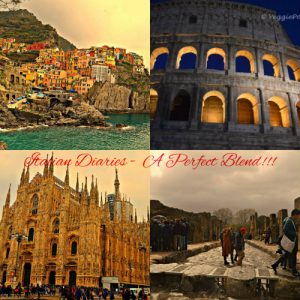
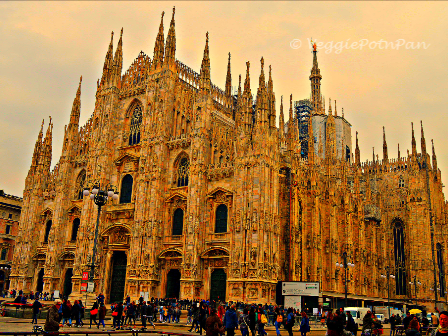
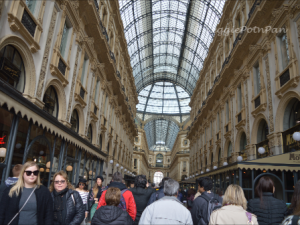
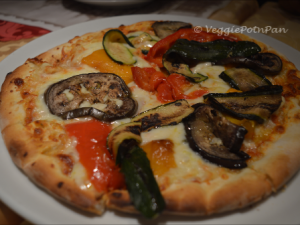
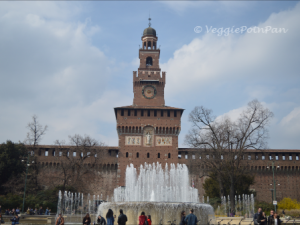
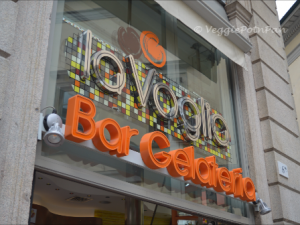
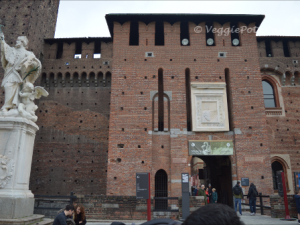
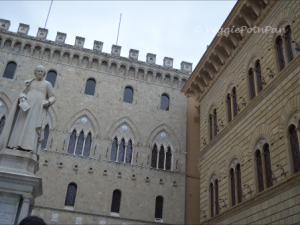
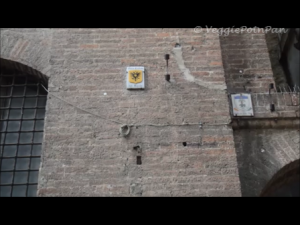
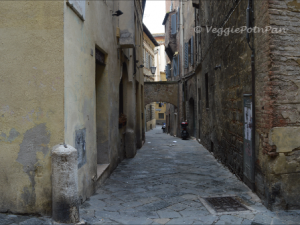
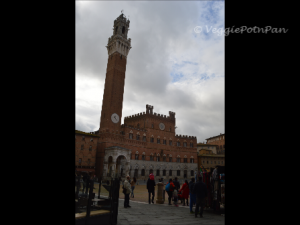
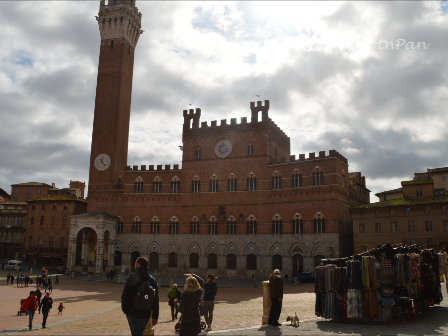
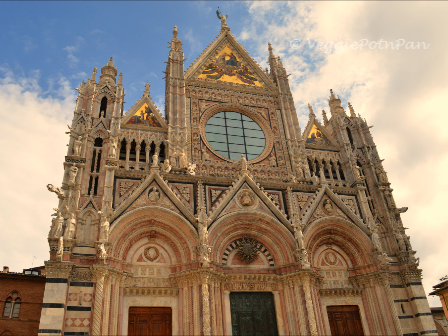
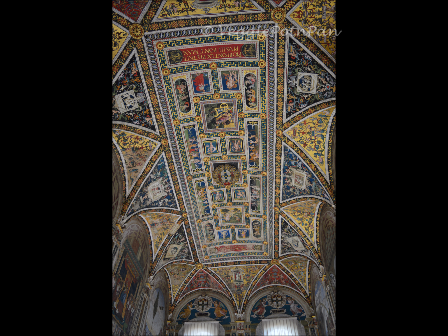
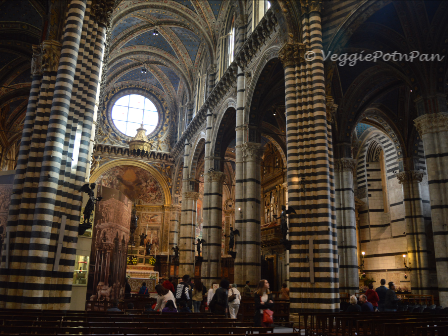
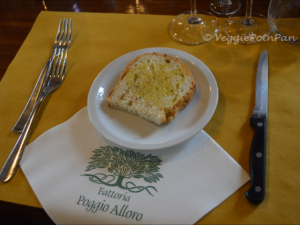
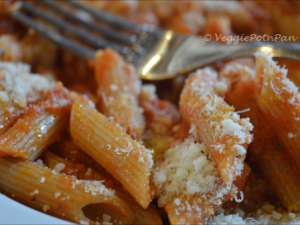
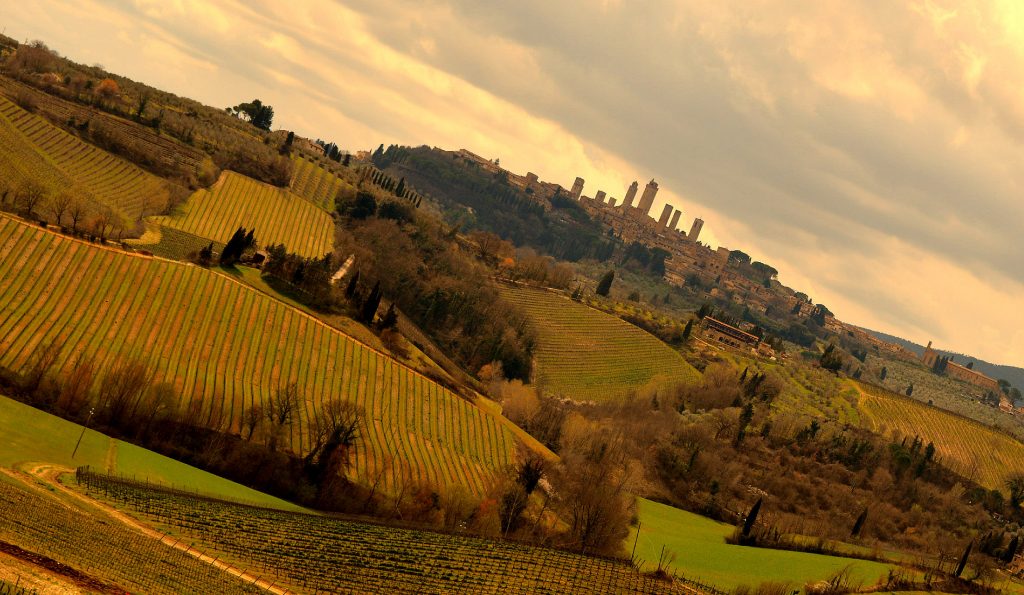
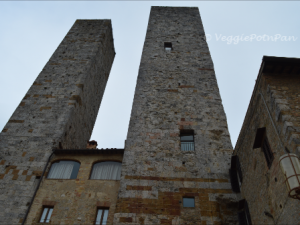
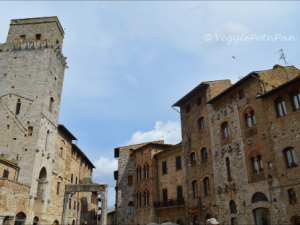
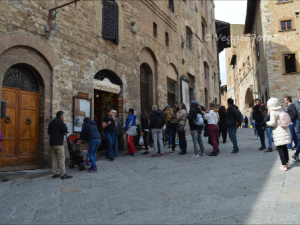
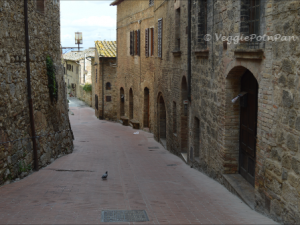
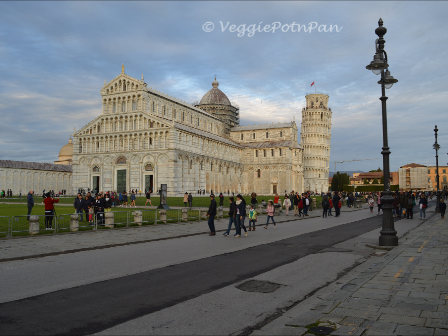
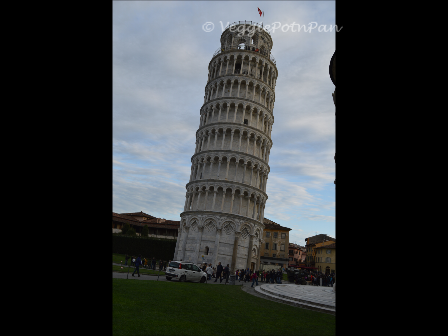
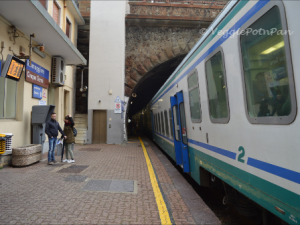
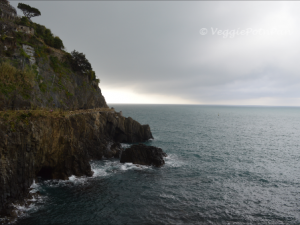
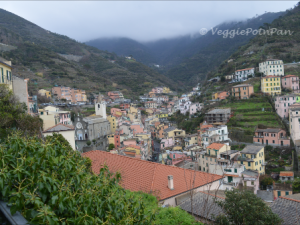
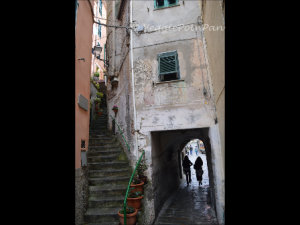
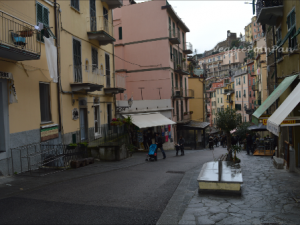
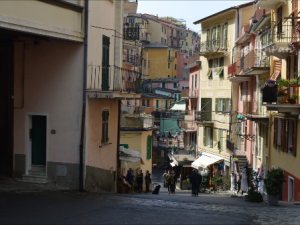
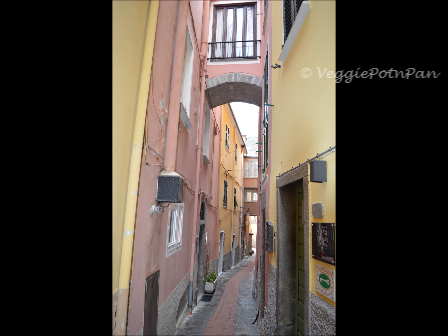
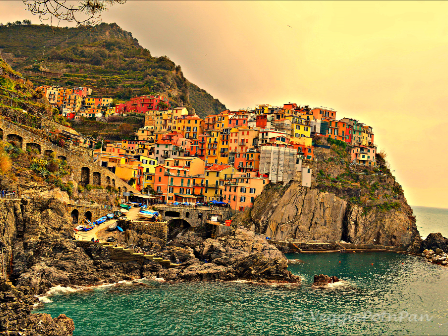
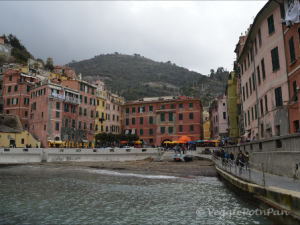
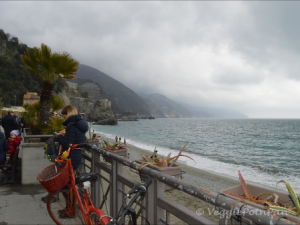
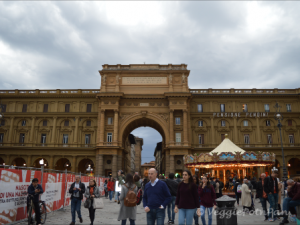
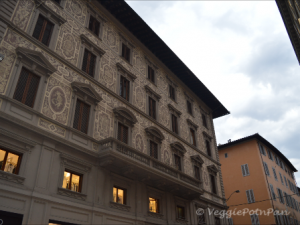
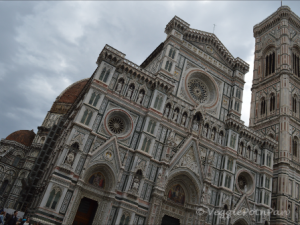
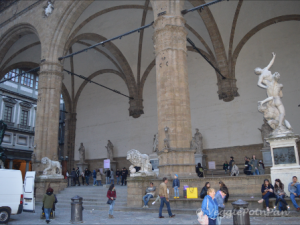
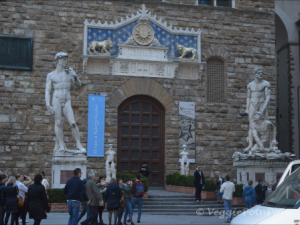


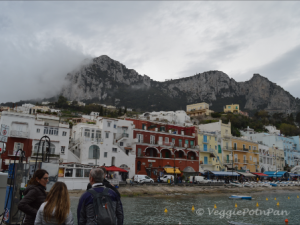
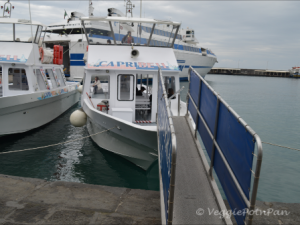
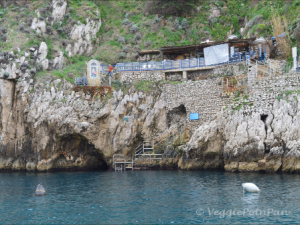
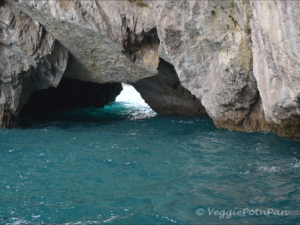
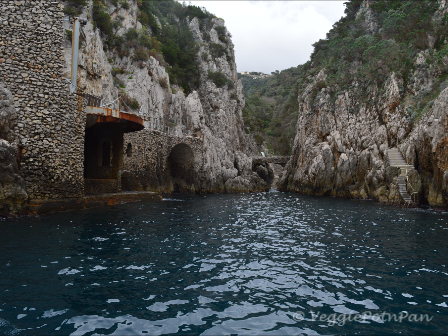
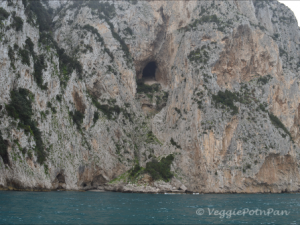
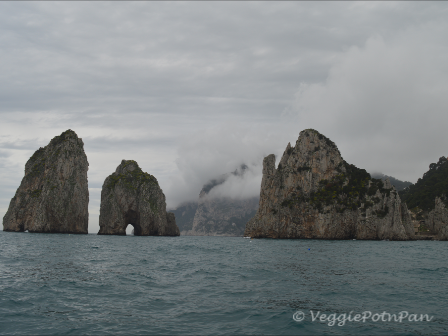
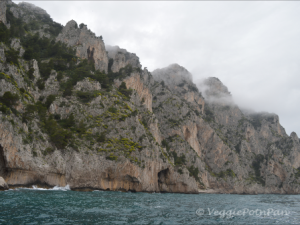
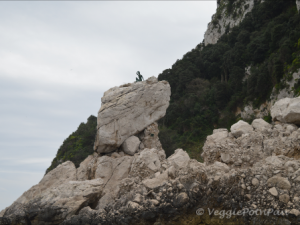
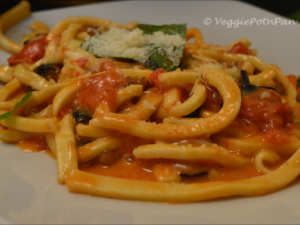
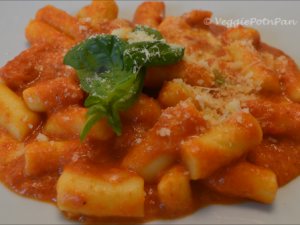
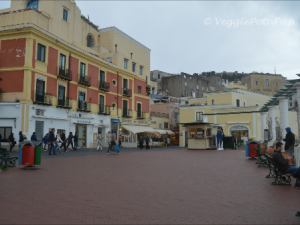
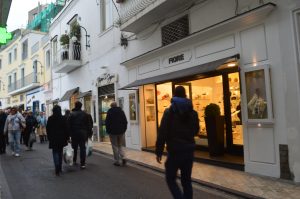
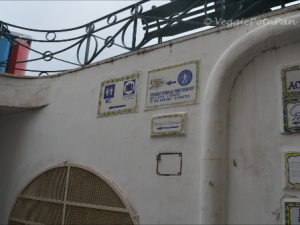
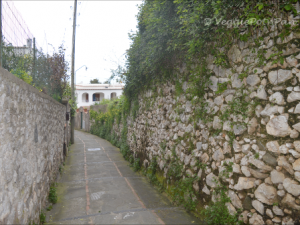
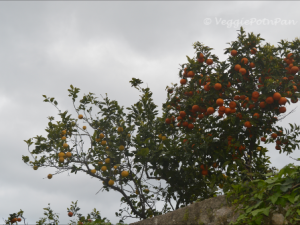
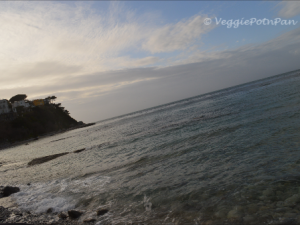
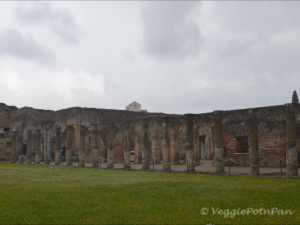
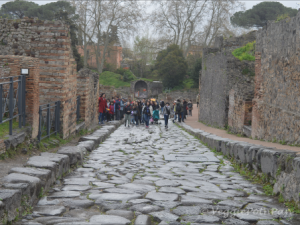
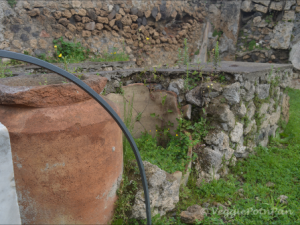
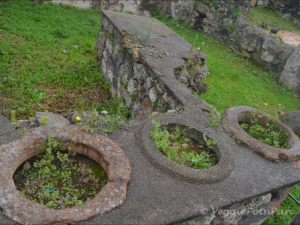
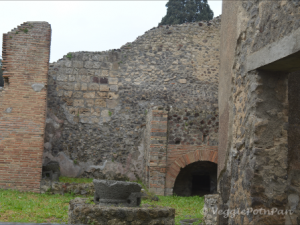
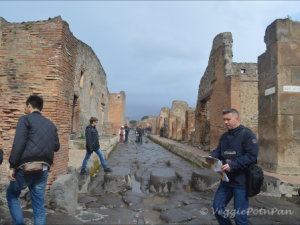
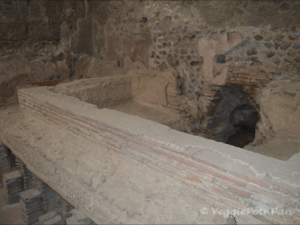
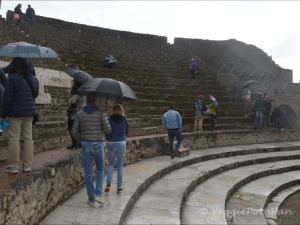
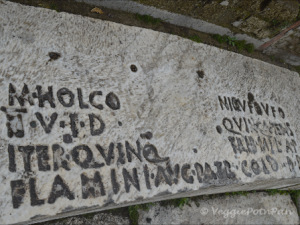
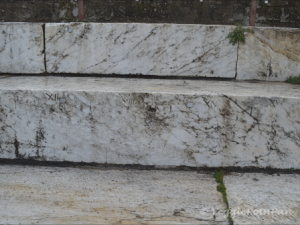
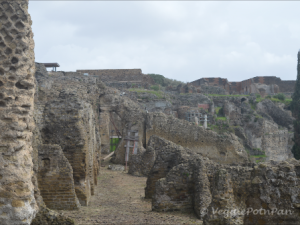
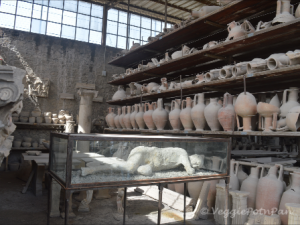
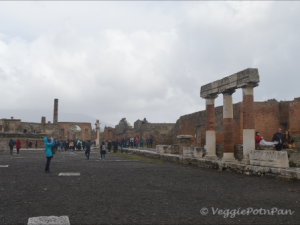
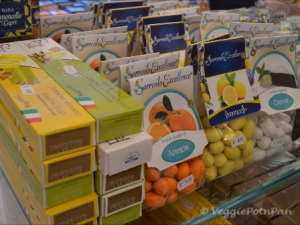
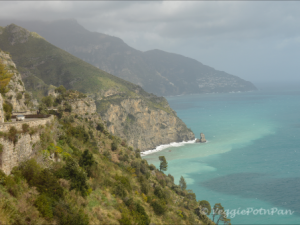
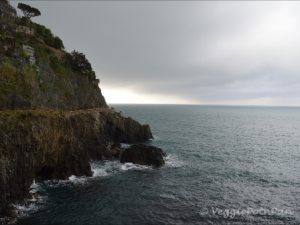
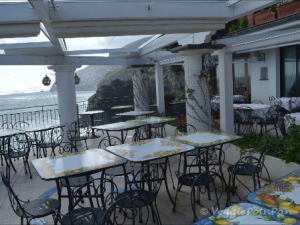
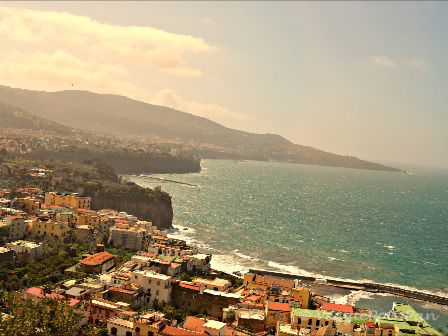
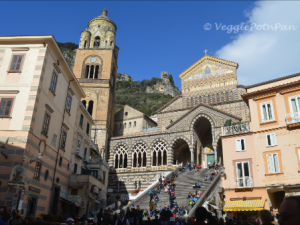
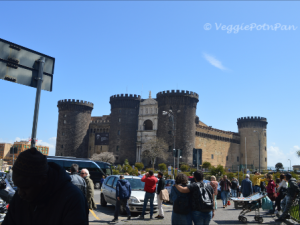
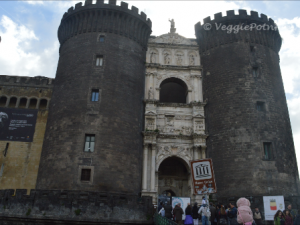
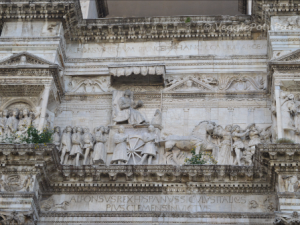

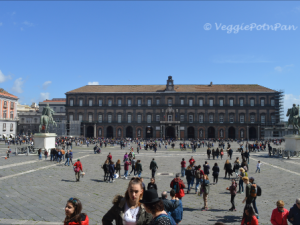
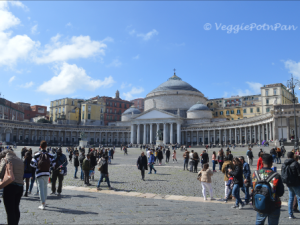
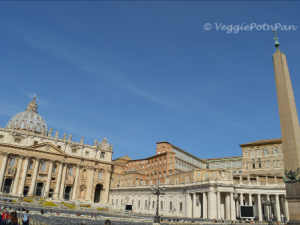
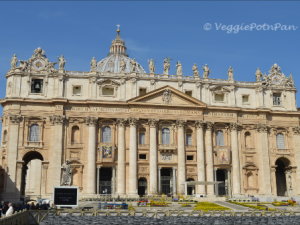
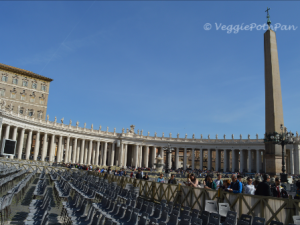
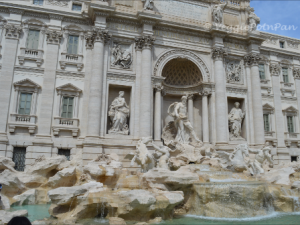
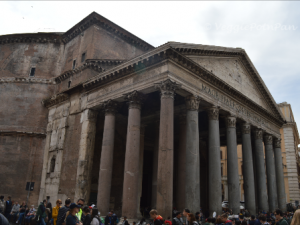
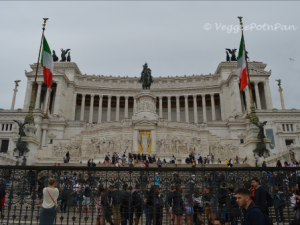
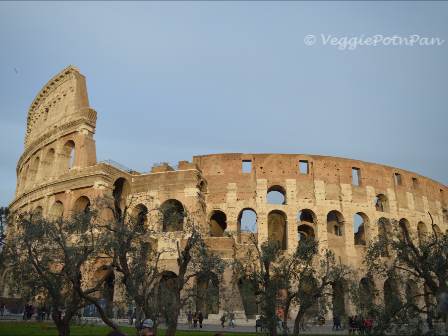
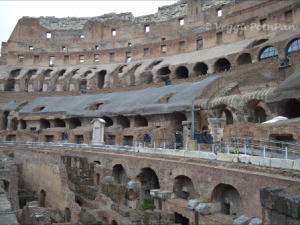

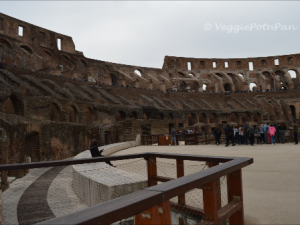
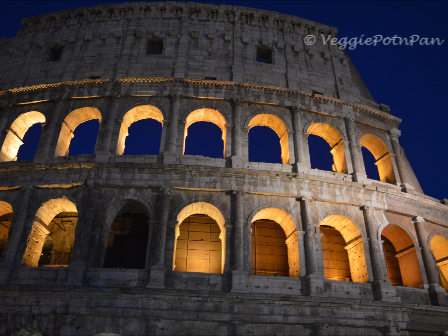
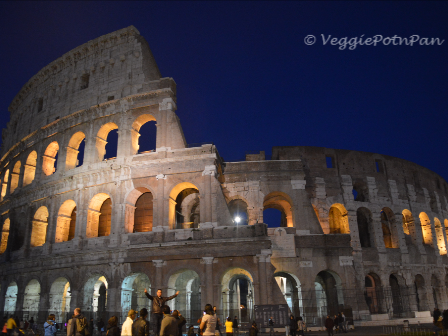
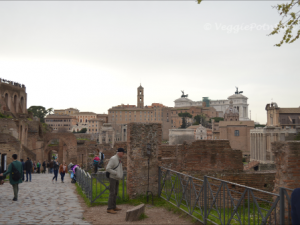
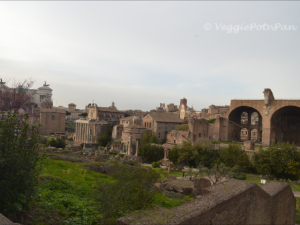
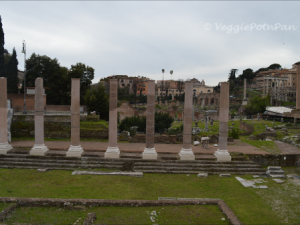
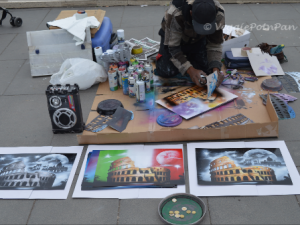
Very useful information which helped us a lot when we visited Rome and Vatican. We went through the minute details about Coloseum, Paletine hills, Roma forum, Trivi fountain, Pantheon etc before visiting these places. This helped us to get the proper perception about these monuments and enjoy the trip.
Thank you so very much 🙂